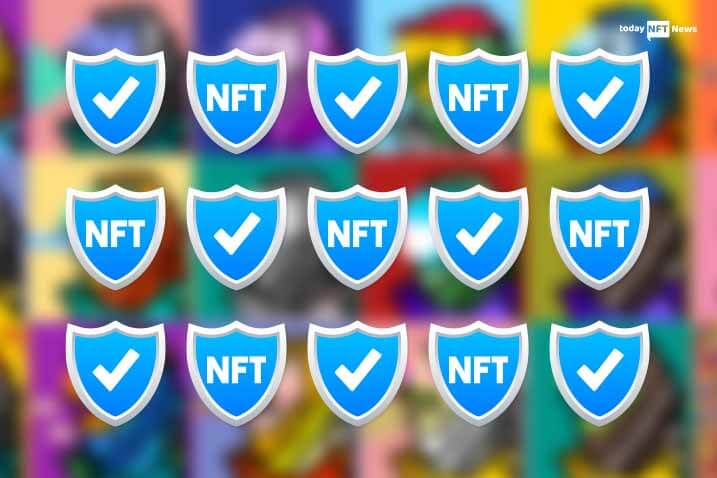Have you ever thought why you should always secure your NFT wallet? Artists, celebrities and people as young as students are fascinated by the money unlocking potential of non-fungible tokens.
The way NFTs have created their spell and established themselves as the path to earn insane money, a few hundred thousand dollars seem like a negligible amount in the NFT universe. But of course, if something has so much to offer and has won the trust of reputed names around the world, hackers are bound to execute their evil intentions. And it is for this reason; you must be serious about securing your NFT wallet.
How to do that? To find out, continue reading ahead…
How to Store the NFTs?
Spending in non-fungible tokens means spending your hard-earned money. Can you afford to forget all your efforts and see the money burning? Obviously no! With that in mind, let us discover the best and secure way to store NFT wallet.
Basically, there are two ways to choose from- hot wallet and cold wallet. While hot wallet remains connected with internet throughout, which makes it prone to online attacks; cold wallet can be connected only during the time of use and can be a computer or hardware. Owing to this reason, it is the most secure way to store the NFTs.
Ledger Nano X is one of the best examples of cold wallet and is also the best way to secure the non-fungible tokens. It can store up to 20 crypto applications. Using the Ledger Live app, about 5,500 coins and token can be managed. Nano X can be connected to a Bluetooth or computer to the mobile application via a USB cable.
It comes with two processors- STM32 MCU chip and Secure Element chip. The former handles the connection between a PC and a smartphone; the latter handles user input and security. Acting as a vault, it prevents malware attacks, safeguards sensitive data and runs secure applications.
One of the major reasons behind cold wallets being the best way to store NFT wallet is that they store important details like password, touch authentication and seed phrase in the device only. As a result, hackers can’t have access to the wallet easily.
A Guide to Set up the Ledger Hardware Wallet
A number of users expect the process to be intimidating, but it is very easy. Following steps have to be implemented-
1. Power on the Ledger wallet: Press and hold the “left and right” buttons. As soon as it gets powered on, the device will display information about the functionality and the Ledger Live App.
2. Setup new device: Press both “buttons” together to setup the device. Create a pin code along with recording and re-verifying the secret phrase.
Open the Ledger Live app. A list of options will be displayed. As the pin code has been already setup and secret phrase has been documented, select “Skip Device Setup.”
The device that is being setup can be selected now. Choose “Ledger Nano X.” A brief security checklist will be shown. Confirmation regarding pin creation and secret phrase successfully saved is required.
To ensure a genuine Ledger service is being used, hardware wallet will be connected to the PC. After getting them connected, choose “Check Now.” Allow Ledger Manager on the hardware wallet by selecting “Allow Ledger Manager” in the device option. If the device is legit, it will be notified by the Ledger Live.
With this, security checklist is completed. A question asking if password has to be created will be asked. Though creating the password is optional, it is highly recommended to create it.
Whether the Ledger has to be enabled to collect analytical data and bug information has to be confirmed. Enabling it or not is one’s own choice.
3. Create an account to manage the crypto assets: An account must be created so as to download any app and get the preferred cryptocurrency as well as transfer the preferred NFTs to the wallet.
After accepting the terms of use, open “Ledger Live” and go to “portfolio.” To create Ledger Wallet profile, select “Add Account.” Upon profile creation, preferred blockchain app can be downloaded.
4. Download the preferred blockchain applications: Preferred blockchain applications can be easily downloaded now. However, before installing any new app on the Ledger wallet, “firmware” must be updated. Only the recent version of the ledger live should be used.
To view the “App catalog,” go to “Manager” in Ledger Live. All the applications supported on the Ledger device are shown here. To view already downloaded app, select “Apps installed.”
To install the blockchain app, find it and click “Install.” Once the downloading completes, it will appear on the device.
NFTs can be transferred to the Ledger hardware wallet now.
A Guide to Transfer NFTs to the Ledger Hardware Wallet
Following steps are meant to be considered-
1. Connect Ledger device to Ledger Live: Upon connected, ensure both the device and Ledger Live have been updated.
2. Go to the receiver tab: Here, account to which the NFT has to be sent must be selected. After verifying the right account, continue to the wallet address.
3. Confirm and copy the Ledger Public wallet address: Public wallet address is displayed here and is stored on the blockchain. This is how NFTs and cryptocurrency are received in the hardware wallet.
4. Send NFTs to Ledger Wallet address: Go to the token that has to be sent. NFTs can be sent from software wallet such as Metamask and marketplaces such as OpenSea and Rarible.
How to Connect Metamask Wallet to Ledger Nano?
The below points present a step-by-step procedure to do the same-
1. Using a USB cable, connect the Ledger Nano to the computer and open the MetaMask crypto wallet in full screen.
2. Click the top right menu on the MetaMask wallet application and click the “Connect Hardware Wallet” option on the drop down menu.
3. Choose the hardware wallet device and pick the address that has to be linked to the Metamask.
4. Upon connecting the hardware wallet to Metamask, NFTs can be safely purchased via the hardware wallet.
Benefits of a Cold Wallet
1. Reduced risk of data breaches
Major data breaches or attack of malware are possible at NFT marketplaces but difficult to control and could lead to serious blunders. Cold wallets are helpful to tackles such issues.
2. Private keys are kept private
Private keys must be stored at the hardware device. As private key remains away from PC or hardware, the key can neither be duplicated nor hacked.
3. Device verification
Online verification can’t be done on the PC and must be done on the hardware wallet. As one’s smartphone can’t be used by others, money stays safe as long as they ensure the safety of their hard wallet device.
4. Encrypted Pin
An encrypted pin is used to secure the wallet. As the pin is generated by the user and details stay with them only, if someone else tries to access the wallet forcefully, the device undergoes self-destruction upon multiple attempts of incorrect pin. Public as well as private keys are removed from the device for the safety of money.
5. Protection against virus infection
Hardware wallet is impenetrable, which is why it is considered the safest alternative to secure the NFT wallet.
Is it Really Possible to Steal NFTs?
You may be expecting to hear NO, but unfortunately, the answer is YES, they can be stolen. Despite being stored on the blockchain, there have been times when non-fungible tokens were stolen. For instance, Nifty Gateway users have felt the pain when they became the victim of hacking and lost thousands of dollars from NFT art.
Tips to Secure the NFT wallet
Following a few smart tricks can help one to secure their non-fungible tokens. Some of these tips are-
- Complex credentials: Login credentials using a combination of numbers, capitals and symbols are difficult to crack.
- Private login: No matter it is something everyone knows already, still keeping the login credentials to one’s own self is the best way. Under any circumstances, credentials should never be emailed or texted to anyone.
- Seed phrase: 12-24 word seed phrase of the software wallet must not be shared, as it can put the safety of NFT wallet at stake.
- Refrain from illegal sites: A number of websites have malicious intentions and must be avoided. Scanning the PC regularly to detect and fix viruses and spyware is also important.
- Storing the passwords offline: Credentials and passwords must be stored in a physical format to avoid data breach and curb the risk of enabling anyone to gain access to the non-fungible tokens.
- Storing NFTs offline: Those who are not looking forward to sell or trade, storing the digital assets offline is an ideal way, something a hardware wallet offers.
The End
An alert mind and caution are the two pillars of securing NFTs in NFT wallet. We hope that the above provided information will act as a helping hand and enable you to accomplish each & every step without any fail.
FAQs
Cold-storage wallets like Ledger and Trezor are considered the best and safest way to store the NFTs. In these wallets, key details like password, touch authentication and seed phrase are stored in the device only, which is why hackers can’t access such sensitive information.
Mobile wallets are a good option no matter one collects NFTs from blockchain-based games or artists. Mobile wallets execute transactions quite easily and they also support the storage and transfer of these items.
Non-fungible tokens are stored on the blockchain. After an NFT is purchased and kept in a digital wallet, the smart contract address that points to the location of the NFT is received. Contents of the NFT’s smart contract are stored via a file sharing system on the web.
Ledger is considered to be the most secure platform to manage, store and have full authority of ownership of NFTs as well as coins. Private keys are secured via the Nano hardware wallet, which in turn, leads to a hack-proof experience.
Metamask, AlphaWallet, Math Wallet, Coinbase Wallet and Trust Wallet are some of the best wallets to trust when it comes to store the NFTs.



